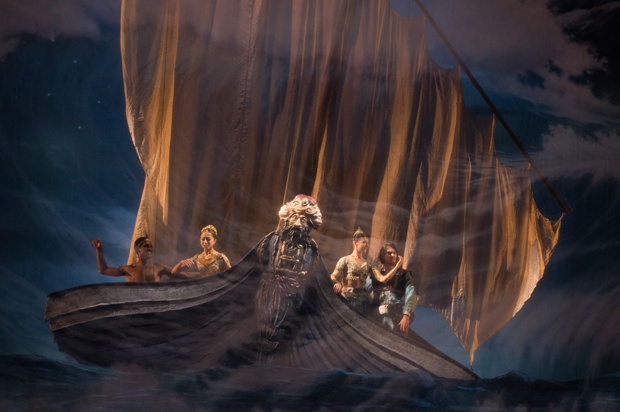Bold decisions are at the core of great artistic directorship. And Tamara Rojo, the ballet star leading English National Ballet, knows that well. Le Corsaire is not the usual ballet classic one craves to see. Yet it makes a splendid addition to the already vast and multifaceted repertoire of ENB. Created in 1856, this work has stood the test of time. Thanks to endless revivals, it has become one of the most manipulated and interpolated choreographic texts. Its current popularity, however, stems from the now legendary revival that the Kirov ballet presented in the West in 1989. Glitzy and star-studded, that staging paved the way for many others, which led to more interpolations and revisitations, often in the name of the much dreaded choreographic philology.
Such a choreographic patchwork does not lend itself to the trappings of modern-day stagings. Its brassy content, its uneven score — credited to no fewer than nine different composers — and, not least, its silly narrative protect it from the dangers of historical authenticity and dramatic rethinking. Which is what makes ENB’s new acquisition a true success. Based on the version created by Anna-Marie Holmes in 1997 for Boston Ballet, the new production is an entertaining romp that magically evokes times gone by without smelling of mothballs. Bob Ringwood’s sets and costumes are central to such magic. Rich, stylish and colourful, they are packed with references to a number of ‘golden epochs’ — particularly intriguing are the Art Nouveau tones of the Jardin Animé dream scene, with winged children out of an Edmund Dulac illustration. More than once, viewers felt they had been plunged into the illustrations of a dance history book. But the visuals would not have worked had the dancing been poor. Style is the key word for this production, which takes great care to make it all look right, even though philology is not on the menu.
And style is something that all the dancers seem to have grasped perfectly, as is immediately evident in the first act, in Crystal Costa’s character dancing and Shiori Kase’s solo in the pas des odalisques. All the principal characters were also portrayed to perfection, with the former Royal Ballet star Alina Cojocaru as Medora, the heroine. Her performance was a master-class in what 19th-century dancing ought to be like, both in terms of technical rendition and artistic interpretation. Next to her, Erina Takahashi, as the second female lead, was also impressive for her distinctive approach to the demands of the choreography. The male contingent was good too, even though male roles in this ballet are more cardboard than those in a pantomime. Vadim Muntagirov excited viewers with a flashy reading of Conrad, the pirate or ‘corsaire’ of the title, matched by Yonah Acosta as the all-flying, all-spinning quintessential baddy Birbanto. Junor Souza impressed many with his prowess as the slave Ali — the one who dances the famous variation, here placed in what historically used to be a trio and not a pas de deux. And Dimitry Gruzdyev added real Russian sparkle and humour to the dodgy slave-seller Lankendem. True, some of the character dances still need work to appear less cautious and more filled with that care-to-the-wind panache seen in most Russian productions. Likewise, the mime scenes need some polishing and some stylistic tiding-up — even though the veteran artist Michael Coleman, as the old Pasha, dominates the stage with some great antics. But these are minor quibbles, as this is, quite simply, damn good theatre.





Comments